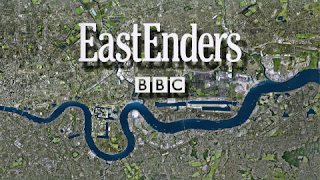Camera
Camera
When capturing the action in a scene, the director has a variety of shot options available to them.
Shot variation can be considered a way of maintaining the audience's interest.
Shot Sizes
Extreme Close Up
This can be used to capture emotions as well as to increase the pace of the action in a scene.
Close Up
This can be used to capture detail on a character's face, such as a reaction or facial expression.
Medium Shot
This can show the audience the perspective they would have if they were facing the character in real life (if they were to be having a conversation with them for example).
Long Shot
This shot establishes the entire scene from a distance. This is useful for the audience to see the type of environment the character is in.
Extreme Long Shot
This shot establishes an entire location form a further distance.
Angles
High Angle
A high angle can make the character appear more vulnerable.
Low Angle
A low angle can make the character appear more dominant or powerful.
Dutch Angle
This angle is a good way of catching the audience's attention as it is a strange angle. This angle can often be used in horror films.
Eye Level Angle
This angle is most commonly used and it shows the characters from a realistic view as the audience would see them in real life.
Bird's Eye View
This shows the audience a view from direct above the area. This angle can be used for establishing a location they are in.
Worm's Eye View
This angle can be used to portray everything as overbearing and threatening.
Over The Shoulder
This angle can be used to portray everything as overbearing and threatening.
POV
The point of view shot is used to capture the perspective of the character.
Movement In-Camera
Zoom In/Zoom Out
Although the camera does not move, the lense is altered to zoom in closer or out on the character. Zooming in will be useful on focussing on the action and zooming out will take you further away from the action.
The zoom shots in the clip above often zoom in on a character's face, which is to portray their reaction at that exact moment.
Camera Movement
Crane
This is where the camera is attached to a mechanical arm that moves to any direction and height. A crane shot can start at a balcony height and then move down to ground level. This is a useful way of tracking action in different parts of one location.
Camera Movement
Crane
This is where the camera is attached to a mechanical arm that moves to any direction and height. A crane shot can start at a balcony height and then move down to ground level. This is a useful way of tracking action in different parts of one location.
Dolly
Having a camera dolly is useful for tracking shots, such as keeping up with a character's running or walking pace. A dolly can create a more realistic zoom effect.
Pan
Panning refers to moving the camera from left to right, This is useful for capturing action in one particular area.
Steadicam
Steadicam shots allow the audience to see and follow action without any cuts. The operator will either walk in front of the actor to show the character form the front or will follow behind the actor showing the audience the environment and scenery in front of them.
Handheld
The effects of using a handheld camera will increase tension for the audience as it is more life like - therefore making the upcoming events unpredictable.


















Comments
Post a Comment